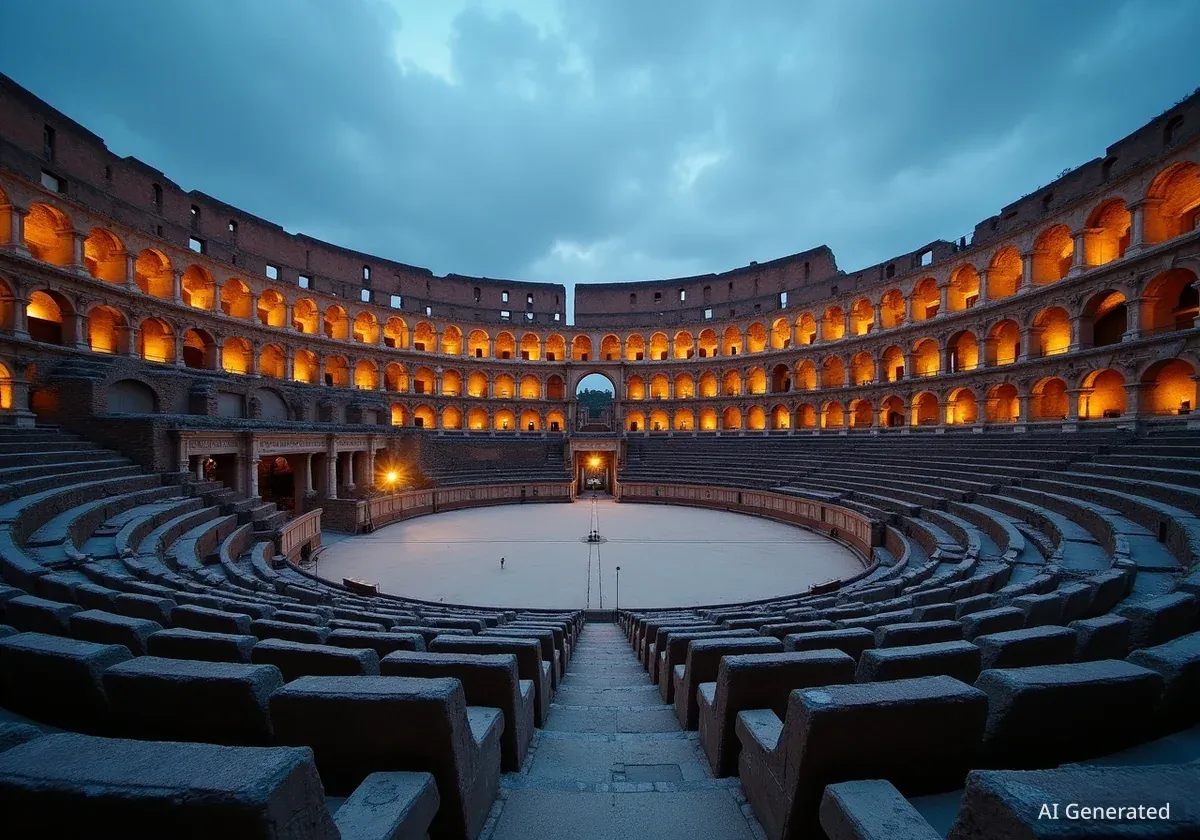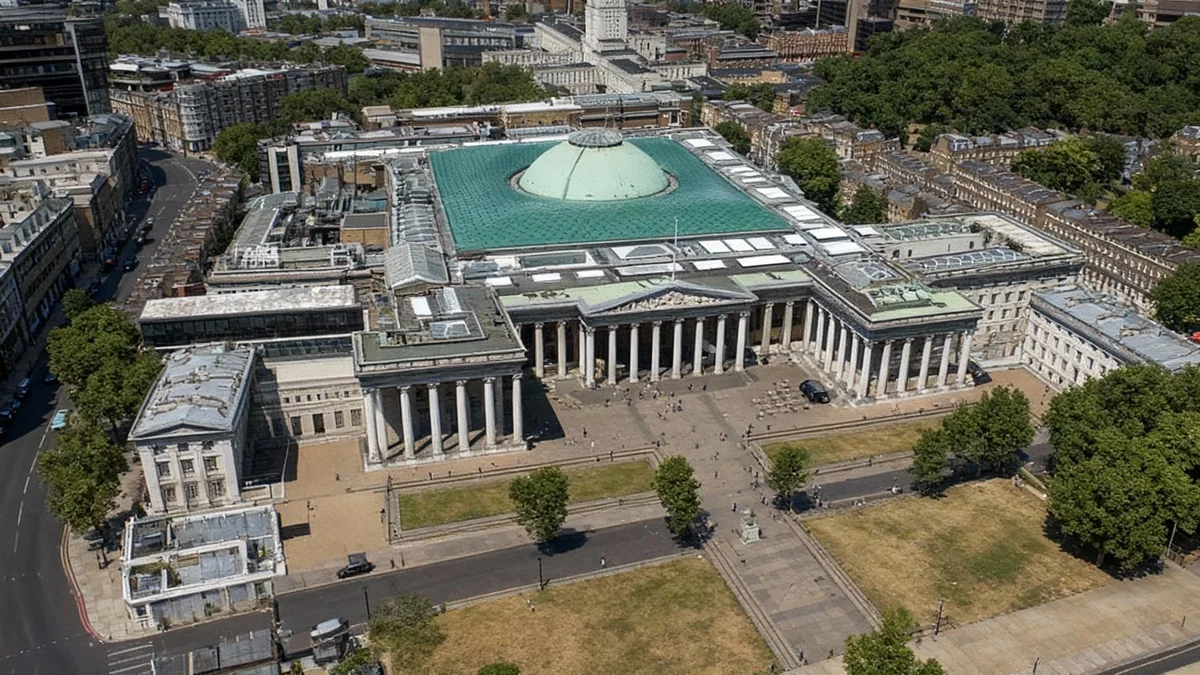A rare limestone relief has gone missing from an ancient tomb in Egypt's Saqqara necropolis. This significant artwork disappeared from the tomb of Khentika, a vizier during the late reign of Pharaoh Teti of the Sixth Dynasty. Authorities have launched an investigation into the incident, which highlights ongoing concerns about the protection of Egypt's archaeological treasures.
The tomb, discovered in the 1950s, had been closed to visitors for decades. It was reopened to the public in 2019 after being used for storage by the Ministry of Tourism and Antiquities. The exact time of the relief's disappearance is not yet clear.
Key Takeaways
- A rare limestone relief vanished from Khentika's tomb in Saqqara.
- The relief showed Khentika painting ancient Egyptian seasons.
- This artistic motif is extremely uncommon in ancient Egyptian art.
- The tomb was closed to the public from the 1950s until 2019.
- Egyptian authorities have started a legal investigation into the theft.
The Significance of the Lost Relief
The missing relief depicted Khentika, a high-ranking official, seated at an easel. He was shown painting the three seasons of the ancient Egyptian calendar. This calendar system divided the year based on the annual cycles of the Nile River's flood and recession.
This specific artistic motif is exceptionally rare in the history of ancient Egyptian art. According to Gabriele Pieke, an Egyptologist and head of the antiquity department at Reiss-Engelhorn Museums Mannheim, only one other known example exists. "It is only one of two [known] in the entire history of Egypt," Pieke stated to The Art Newspaper. She added that Khentika likely copied the motif from his neighbor Mereruka, whose tomb is slightly older.
"It is only one of two [known] in the entire history of Egypt." – Gabriele Pieke, Egyptologist
The rarity of this depiction makes its loss an important event in the archaeological community. Pieke described the apparent theft as an "archaeological tragedy."
Interesting Fact
The ancient Egyptian calendar had three seasons: Akhet (Inundation), Peret (Growth), and Shemu (Harvest). These seasons were directly linked to the flooding of the Nile River, which was vital for agriculture.
Investigation and Official Response
The exact date of the relief's disappearance remains unknown. However, a report by Cairo 24 news outlet indicated that a British mission discovered the relief missing in May. The only existing record of the Khentika relief now comes from a comprehensive study completed in 1953 by British Egyptologist T.G.H. James.
The Ministry of Antiquities has released an official statement regarding the incident. The ministry confirmed that "all necessary legal actions have been taken." They also stated that "the matter has been forwarded to the public prosecutor for investigation."
The statement emphasized the ministry's commitment to protecting Egypt's cultural heritage. It asserted that they would ensure "the Egyptian archaeological heritage is preserved and protected from any violations or illegal practices."
Concerns Over Antiquities Protection
The disappearance of the Khentika relief raises broader concerns among heritage experts. They point to an active black market for antiquities as a major threat to Egyptian archaeological sites. This incident is not isolated.
Less than a month before this report, an ancient pharaoh's bracelet was stolen from the Egyptian Museum in Cairo. That artifact was reportedly melted down for its gold, highlighting the destructive nature of such thefts.
Background on Saqqara
Saqqara is an Egyptian village located in the Giza governate, approximately 30 kilometers south of Cairo. It served as the ancient burial ground for Egyptian royalty and was once the necropolis for Memphis, the ancient Egyptian capital. The site is home to several pyramids, including the famous Pyramid of Djoser.
Saqqara also contains a large number of mastabas. These are flat-roofed, rectangular tombs made of mudbrick. Many prominent Egyptians were buried in mastabas during the Early Dynastic Period and the Old Kingdom. Together with other complexes, Saqqara is part of the Memphite Necropolis, which UNESCO designated a World Heritage Site in 1979.
Recent Events and International Context
The theft of the Saqqara relief comes at a time of other significant developments in Egypt's cultural sector. It coincides with news that Khaled Al-Anani, Egypt's former minister of tourism and antiquities, is expected to be appointed as UNESCO's new director-general.
This potential appointment underscores the international importance of Egyptian heritage. It also brings into focus the challenges faced in safeguarding these irreplaceable historical assets from theft and illegal trade. The global community often looks to Egypt as a steward of ancient history.
Efforts to combat the illegal trade in antiquities require international cooperation. Organizations like UNESCO play a key role in setting standards and supporting countries in protecting their cultural heritage. The investigations into these recent thefts will be closely watched by archaeologists and heritage advocates worldwide.





